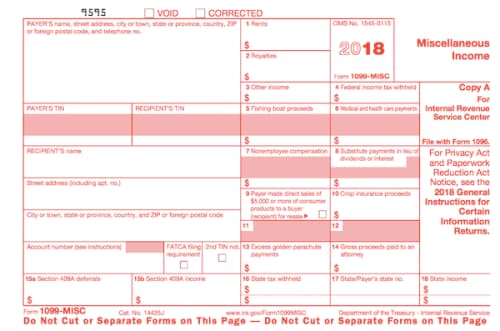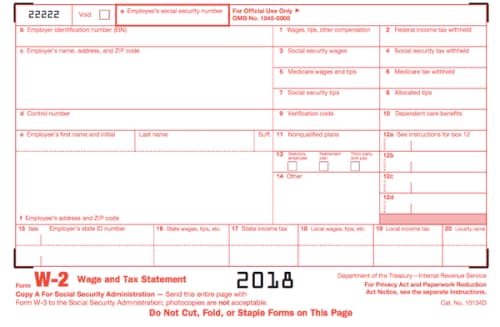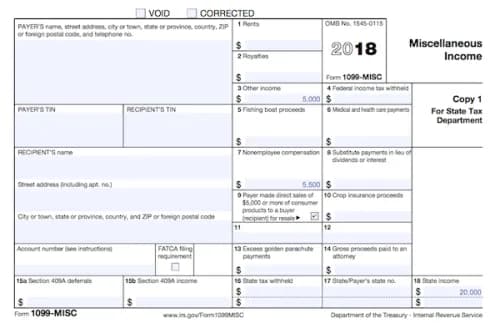What is a 1099 Form?
Becoming financially literate and independent is no easy feat. No matter how good you are at math or how responsible and mature you are, it’s hard to be well-prepared for the kinds of responsibilities you inevitably take on when you begin working and living on your own. If you’re like any normal young adult, you’ve probably spent what feels like way too many hours experimenting with budget worksheets and trying to figure out what percentage of your income should go to rent or how to deal with filing your taxes.
Why a 1099 matters

No matter what your college major or job, you need to learn the basics that come with #adulting and being an employee or freelancer. Basically, once you have taxable income, you need to pay income tax (hint: memorizing your social security number may come in handy) — and the way in which you go about filing your tax-related forms and records will depend on what kinds of job and employment you have.
We’ve been there, and we know that navigating taxes and any associated tax form is not the simplest or most fun task. That’s why we’ve put together a simple guide that will help you understand what exactly a 1099 form is (if you’re a freelance writer or any kind of independent contractor with “miscellaneous income,” pay attention!) and how it affects and factors into your income tax and tax return.
First, you need to know the difference between the 1099 Form (there are different types of 1099s, but, for the most part, as an independent contractor, the particular form you’d be dealing with is one formally known as the 1099-MISC form) and any other tax form you might hear about, like a Form W-2. The Internal Revenue Service (AKA the IRS) recognizes the 1099 Form and others as information returns and uses them to account for individuals’ self-employment earnings.
What's the difference between a 1099 and a W-2?

If you’re an employee who gets payments in the form of a salary or wage, you may be less familiar with the 1099 and more familiar with the W-2 form, which your employer is required to use (and to send you a copy of) to report your annual earnings to the IRS at the end of each tax year.
But if you’re self-employed or working as an independent contractor (think freelance editor, self-employed brand consultant, or Uber driver), then any client or business owner who pays you at least $600 during the tax year is required to report those payments to the IRS—and to you—on a copy of an 1099-MISC form, which you, in turn, need to submit to the IRS when you prepare your tax return. The form indicates to the Internal Revenue Service exactly how much you’ve been paid by a company or by various entities as an independent contractor (this is also known as non-employee compensation).
Scenarios for using or not using a 1099
What if you’ve been paid less than $600 by one of your clients in the past tax year? Then that client does not need to send you the 1099 form, but you’re still required to report the income.
Note that the 1099 form is only needed when you are paid for business services and not personal ones. For example, if you work as a freelance photographer, any business or business owner who pays you for your photography services would send you a cop of the 1099 they send to the IRS. But if you hire someone to come to clean your house, you would not have to send that person a 1099 because he or she would be supplying you with a personal service.
Working as a freelancer or for yourself can have a lot of perks and benefits, but you do have to be very on top of your tax filing if you have any form of miscellaneous income or nonemployee compensation; while companies will automatically withhold taxes for their employees, individuals who are working as independent contractors are required to handle their own taxes.
Several details are needed to complete a 1099-Form. Oftentimes, a business will already have the info it needs on its independent contractors on file because they have collected it via a W-9 form. Among the details needed are legal name of the contractor, business name (if it differs from the contractor’s name), the contractor’s tax classification (for instance, individual/sole proprietor or single-member LLC; C corporation, S Corporation, Partnership, etc.), exemption codes, the contractor’s address, and their tax identification number (sometimes referred to as a taxpayer identification number) or social security number.
What types of 1099 forms are out there?
There are a variety of 1099 forms you might come in contact with, but here are the four most common:
- 1099-MISC: This is the form you are probably most familiar with and will most likely encounter. As a freelancer or someone who is self-employed, you will use this form to report your income.
- 1099-INT: This form is for you to report income as the result of interest like from a savings account.
- 1099-DIV: You use this form to report dividends and distributions from investments.
- 1099-C: This form is for reporting canceled debt. If you have a loan that was forgiven, you’d report the portion that was no longer owe.
How to fill out a 1099

With so many boxes—many of which probably won't apply to you or your work—it can be difficult to understand how exactly to complete a 1099. While entering your personal information, such as your address, is self-explantory, other parts of the form are less so. Here's a breakdown of how to fill out the 18 numbered boxes on your 1099 form.
1. Rents
The box is for property owners who rent out real estate. If you fall into that category, you must report the rent paid to you.
2. Royalties
Self-employed creators, such as writers or invetors, may earn royalty income from published or patented works that they should report here.
3. Other income
This box accounts for income that is not reportable in other boxes on your form. Examples include (but are not limited to):
• Prize or award money
• Gambling profits
• Payment for medical research studies
• and more.
4. Federal income tax withheld
Enter any federal income tax reported to you here.
5. Fishing boat proceeds
If you own or work on a fishing boat, enter your share of proceeds from the sale of a catch or the fair market value of a distribution to individual crew members for boats with fewer than 10 members.
6. Medical and healthcare payments
Enter amounts of greater than $600 paid to medical providers, including insurance payments. This box is for the person or business that provided the medical services to your business, not the person receiving the services.
7. Nonemployee compensation
Include compensation of $600 or more for services performed as a nonemployee (independent contractor), such as oil and gas used for work purposes or professional service fees.
8. Substitute payments in lieu of dividends or interest
Payments of at least $10 made "in lieu of dividends or tax-exempt interest as a result of a loan of a customer's securities" should be entered here.
9. Payer made direct sales of $5,000 or more of consumer products to a buyer (recipient) for resale
Check off this box (do not enter an amount) if you made you made direct sales of at least $5,000 of products for resale.
10. Crop insurance proceeds
Farmers should report any payments they receive from the federal government as a result of any damage to their crops or inability to plant crops because of circumstances such as natural disasters.
11 and 12. Blank
Leave these boxes blank. They are for IRS use.
13. Excess golden parachute payments
High-paid employees who leave their company may be able to receive large payments, known as golden parachute payments, upon their departure. Payments that exceed the amounts the employee received on average over the previous five years should be reported here.
14. Gross proceeds paid to an attorney
Record payments for legal services of more than $600 here.
15a. Section 409A deferrals and 15b.Section 409A income
Use these boxes if you contributed to a section 409A retirement plan but weren’t an employee or didn't meet the guidelines.
16. State tax withheld
If any state tax was withheld from your paycheck, it will be reported here.
17. State/Payer’s state no.
If state tax was withheld, enter the ID of the employer that withheld it here.
18. State income
This is the amount of income reported on this form that is subject to state taxes.
For more tips
Filling out a 1099 can be a complicated and difficult process. For more advice on reporting income and saving money as a freelancer or independent contractor, read 11 Tax Tips That Could Save You Enough To Buy A VW Bug
Why women love us:
- Daily articles on career topics
- Jobs at companies dedicated to hiring more women
- Advice and support from an authentic community
- Events that help you level up in your career
- Free membership, always
